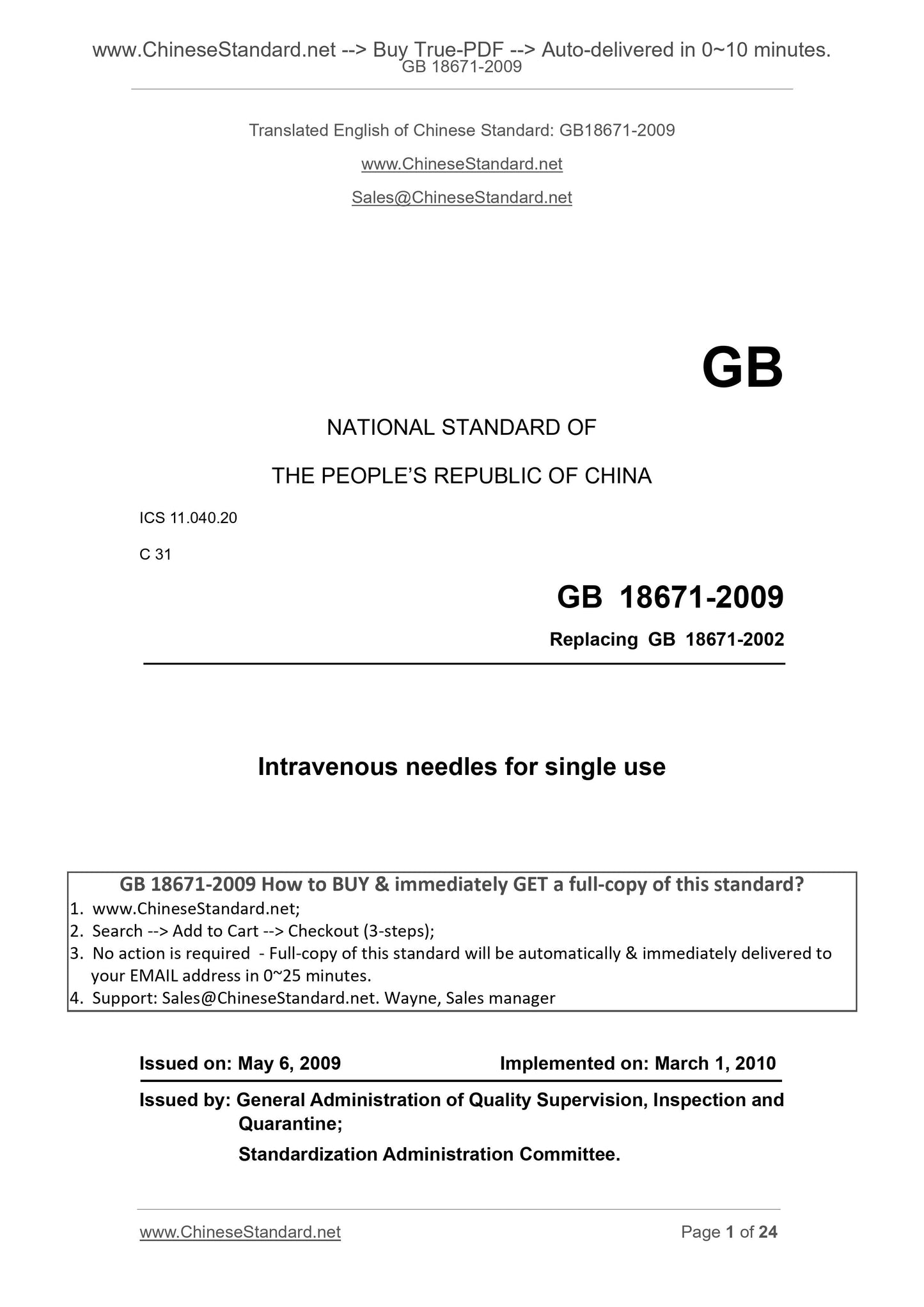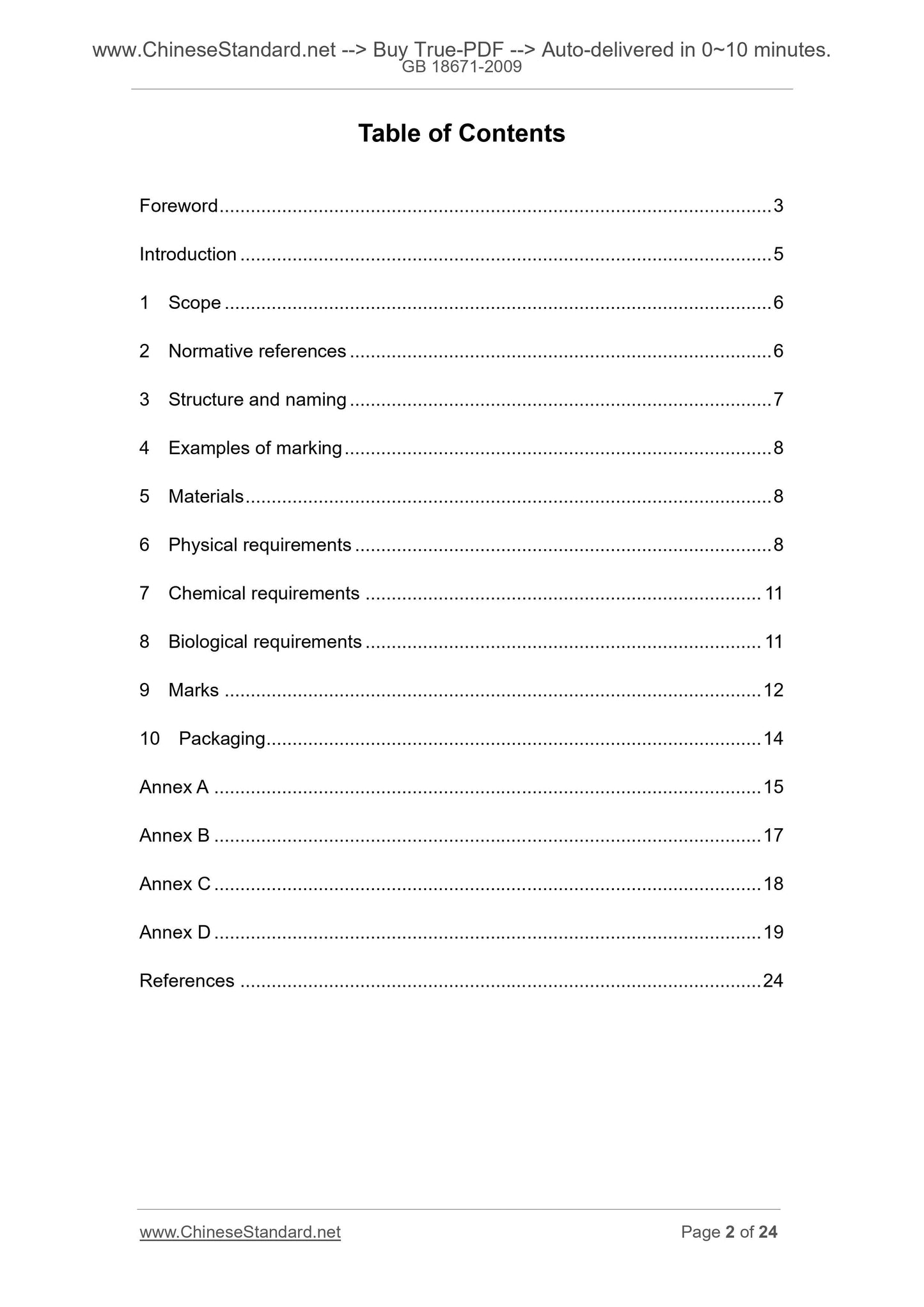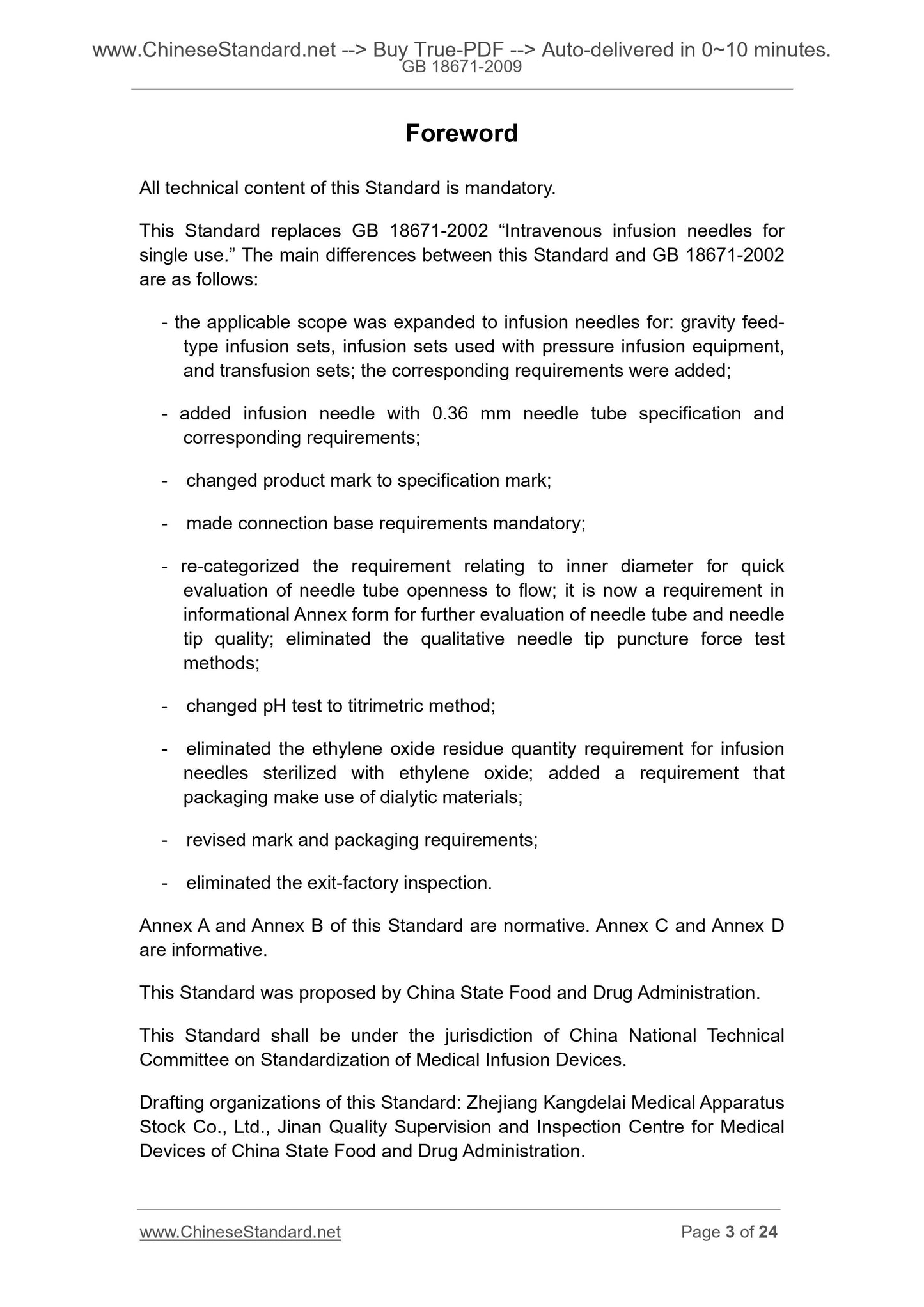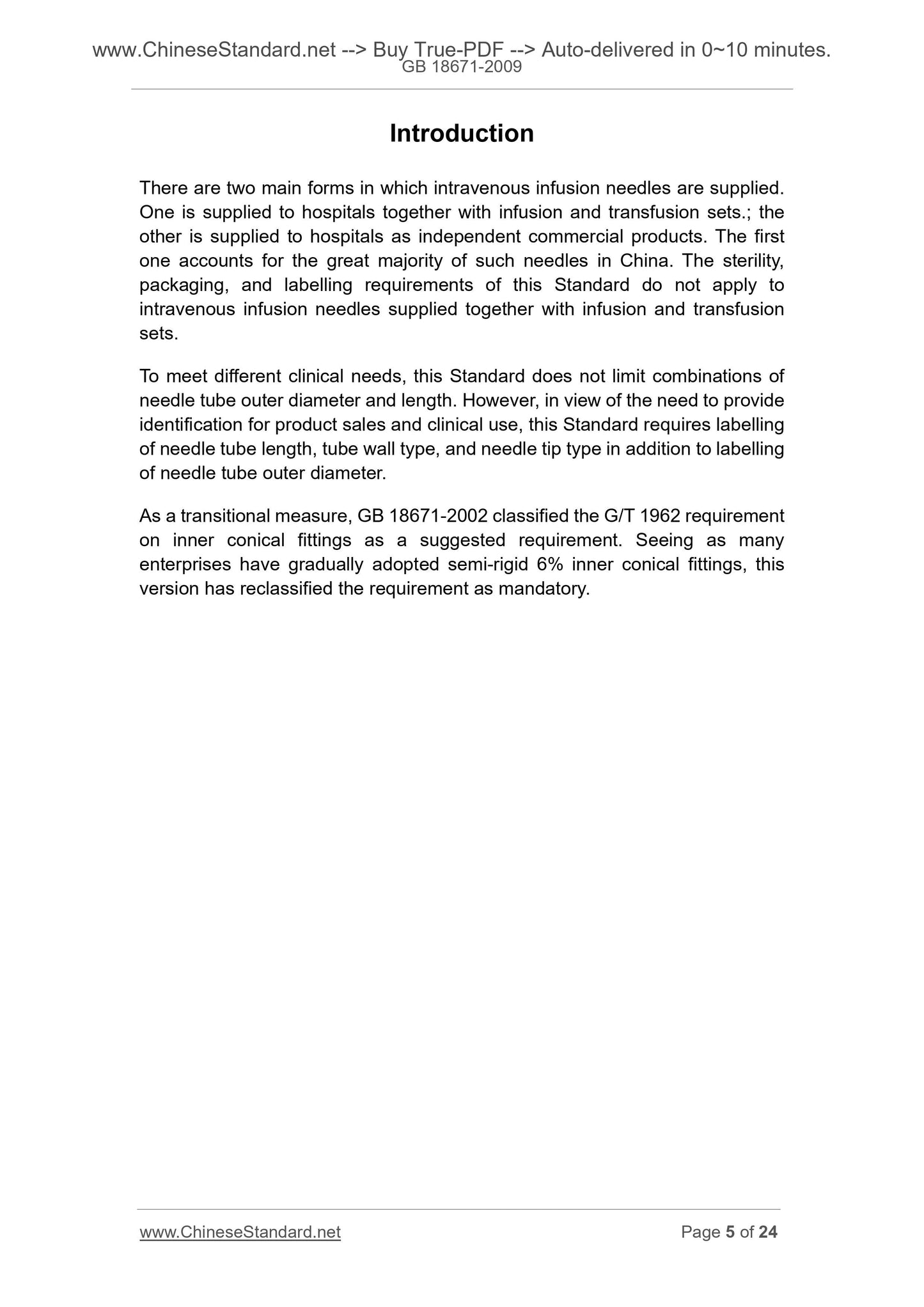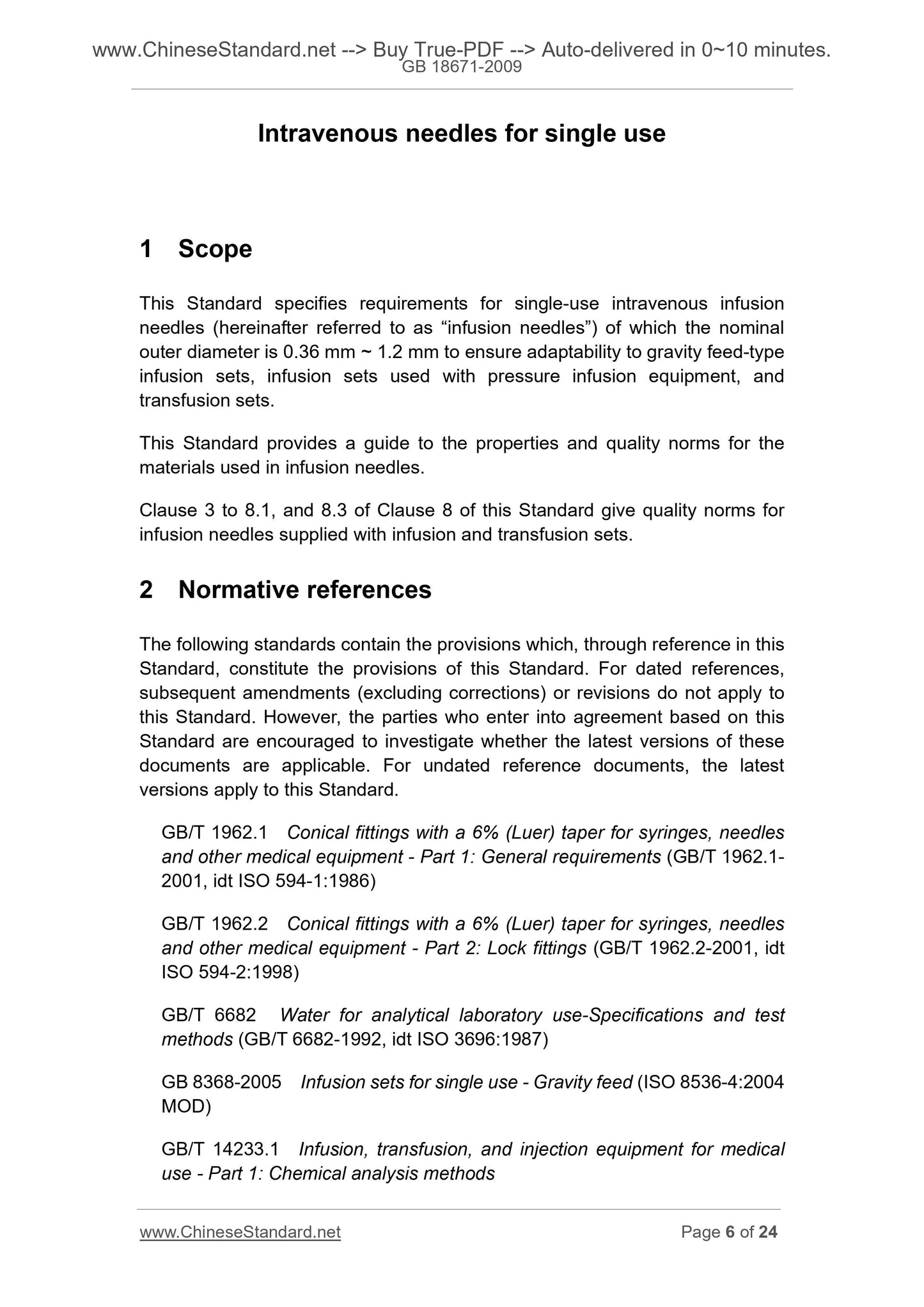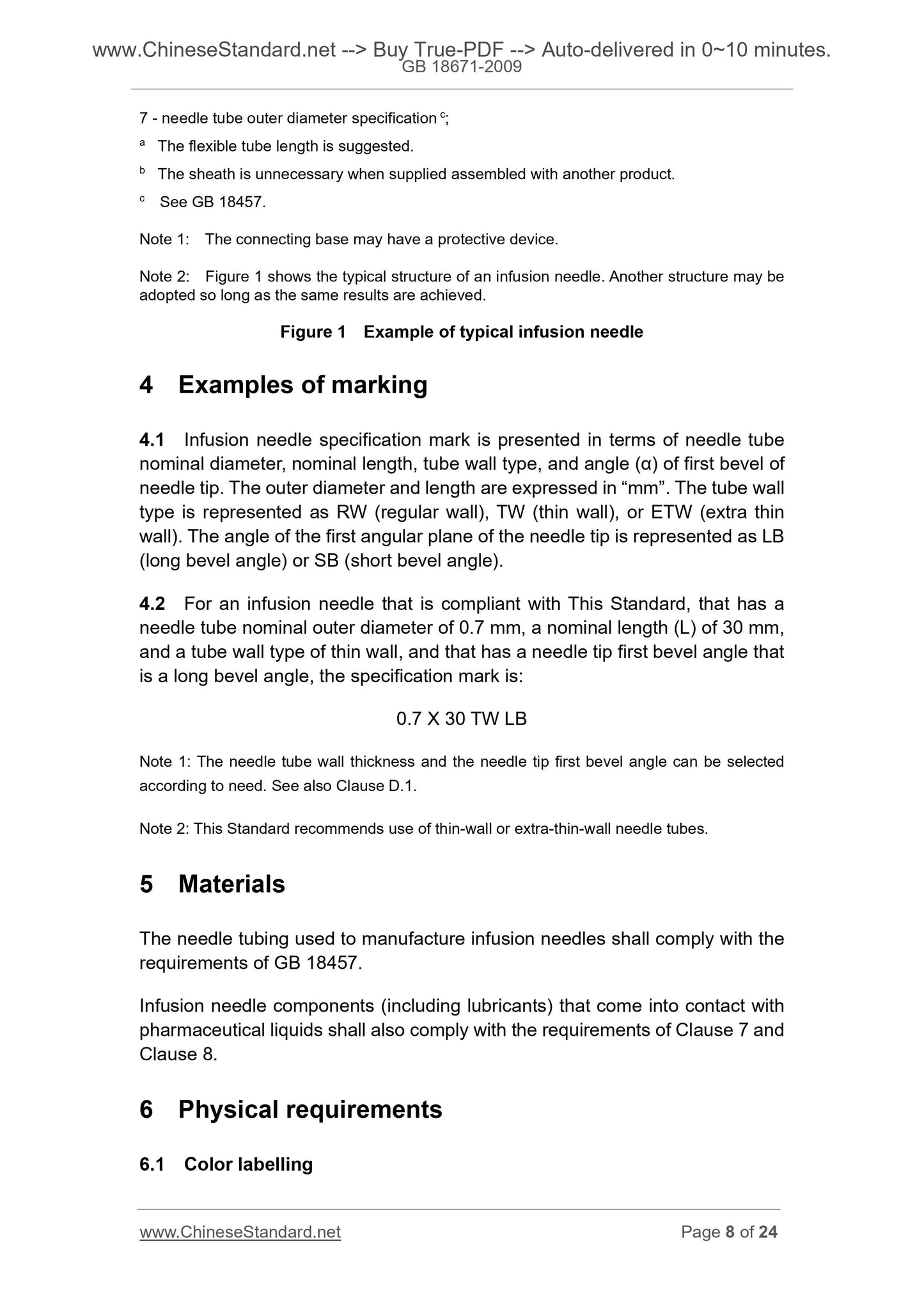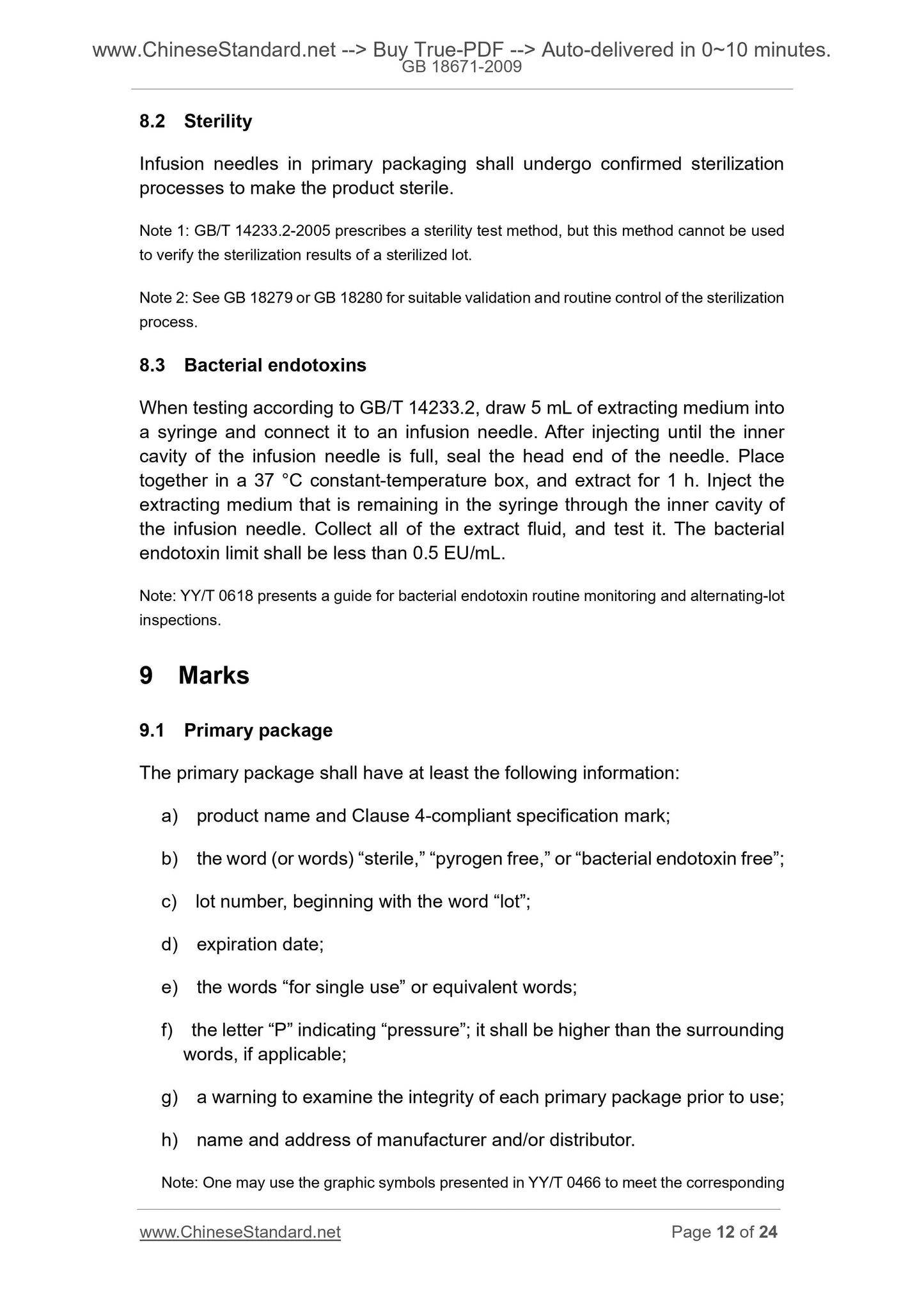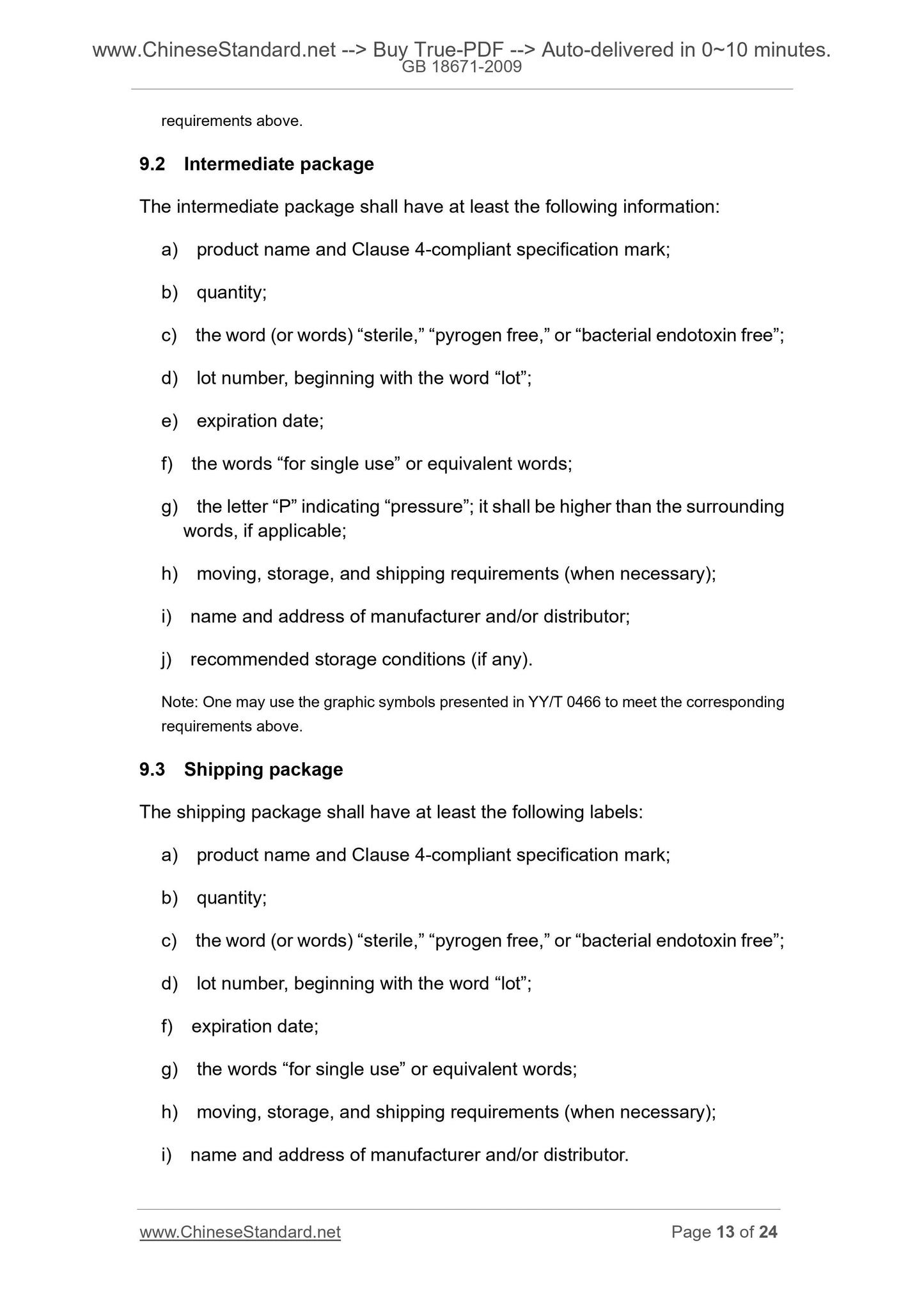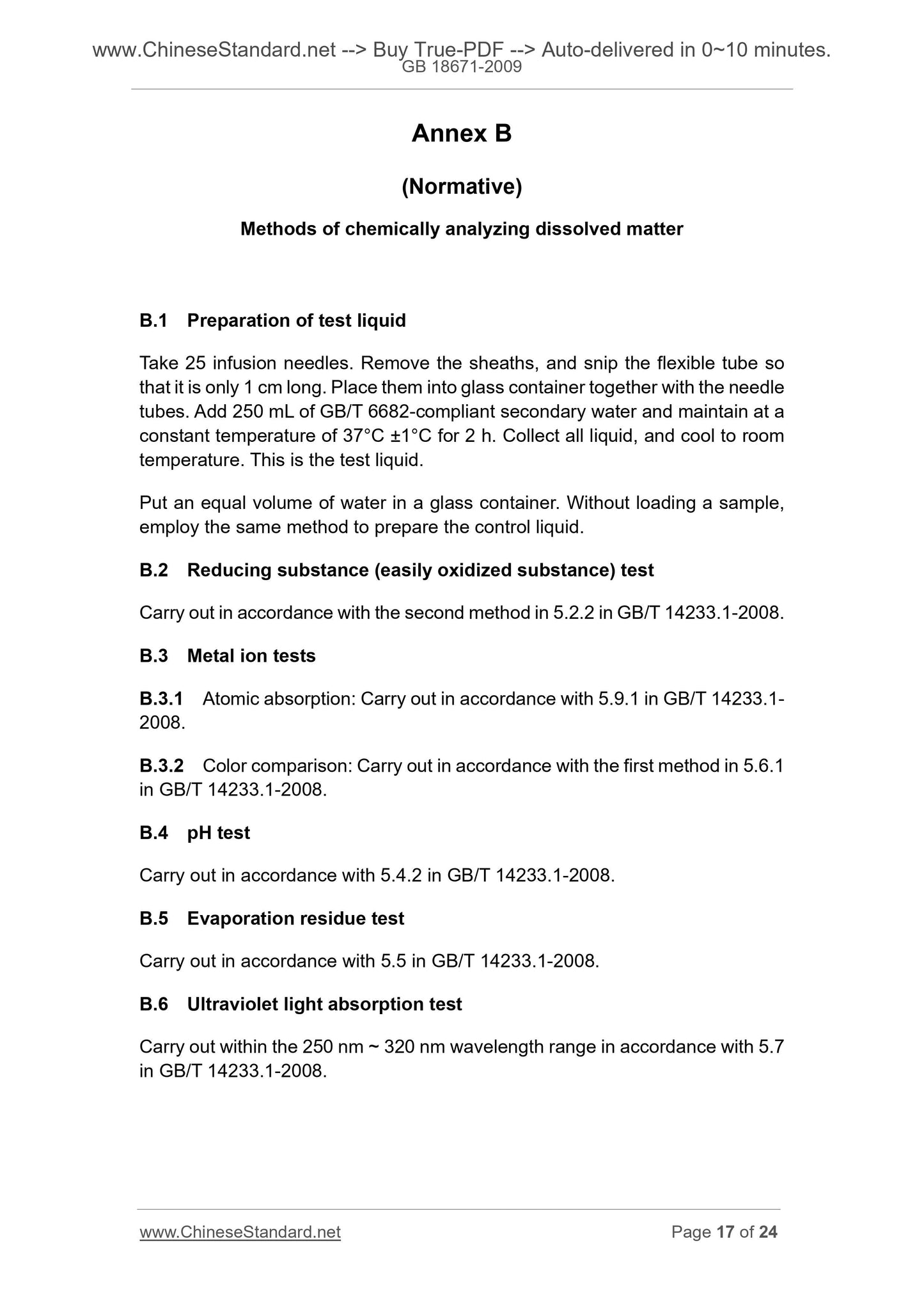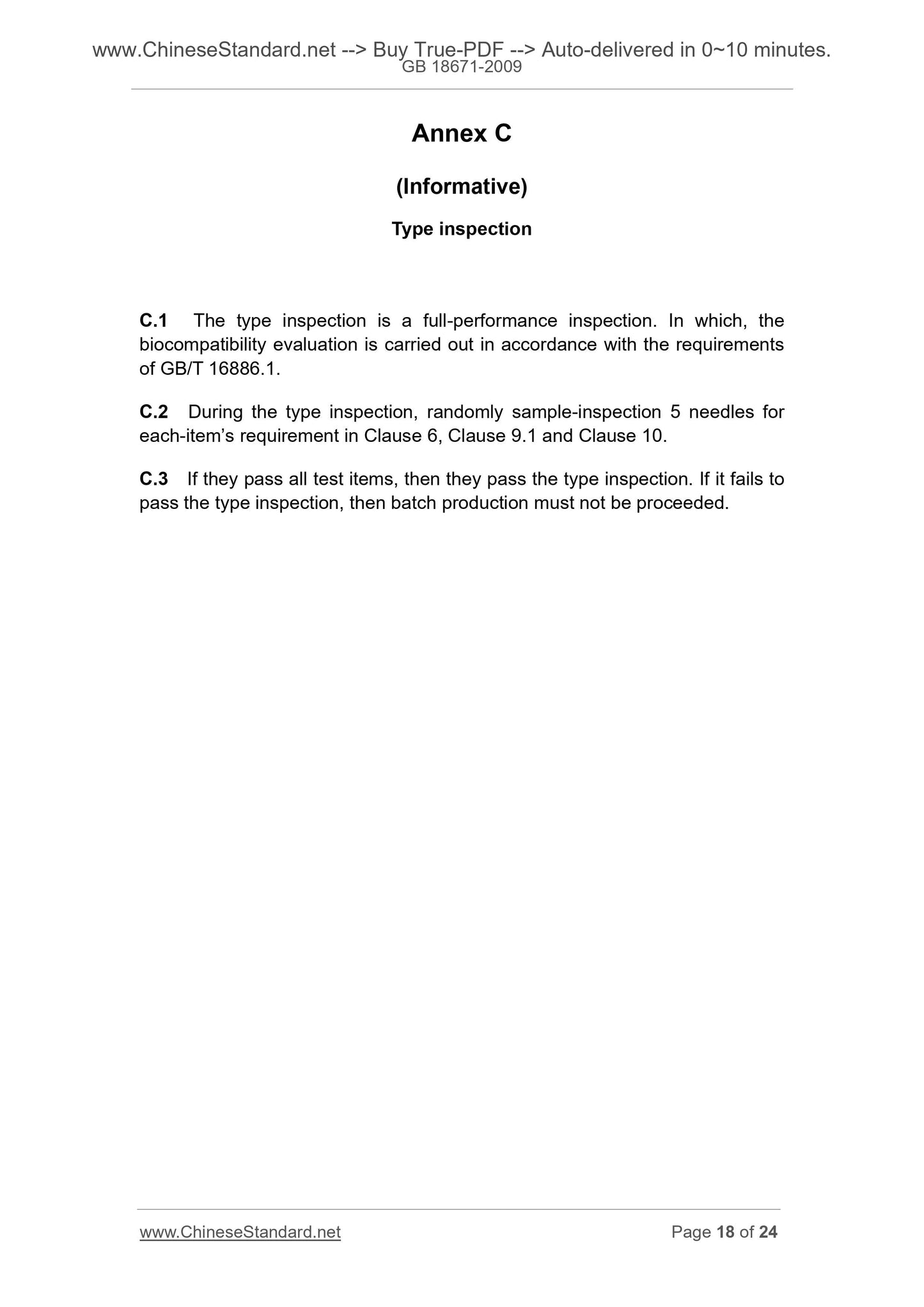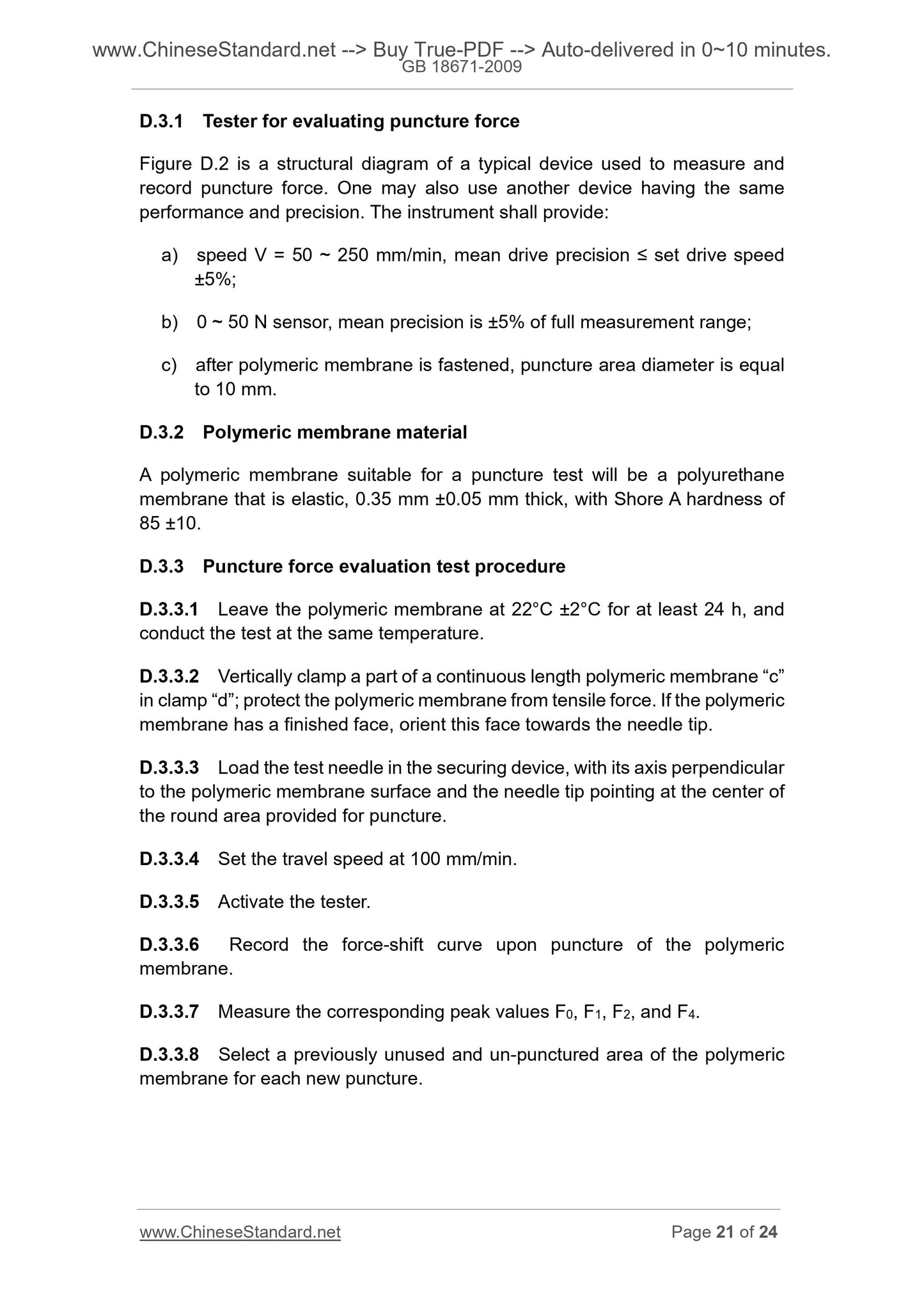1
/
of
11
www.ChineseStandard.us -- Field Test Asia Pte. Ltd.
GB 18671-2009 English PDF
GB 18671-2009 English PDF
Regular price
$85.00
Regular price
Sale price
$85.00
Unit price
/
per
Shipping calculated at checkout.
Couldn't load pickup availability
GB 18671-2009: Intravenous needles for single use
Delivery: 9 seconds. Download (and Email) true-PDF + Invoice.Get Quotation: Click GB 18671-2009 (Self-service in 1-minute)
Newer / historical versions: GB 18671-2009
Preview True-PDF
Scope
This Standard specifies requirements for single-use intravenous infusionneedles (hereinafter referred to as “infusion needles”) of which the nominal
outer diameter is 0.36 mm ~ 1.2 mm to ensure adaptability to gravity feed-type
infusion sets, infusion sets used with pressure infusion equipment, and
transfusion sets.
This Standard provides a guide to the properties and quality norms for the
materials used in infusion needles.
Clause 3 to 8.1, and 8.3 of Clause 8 of this Standard give quality norms for
infusion needles supplied with infusion and transfusion sets.
Basic Data
| Standard ID | GB 18671-2009 (GB18671-2009) |
| Description (Translated English) | Intravenous needles for single use |
| Sector / Industry | National Standard |
| Classification of Chinese Standard | C31 |
| Classification of International Standard | 11.040.20 |
| Word Count Estimation | 17,182 |
| Date of Issue | 2009-05-06 |
| Date of Implementation | 2010-03-01 |
| Older Standard (superseded by this standard) | GB 18671-2002 |
| Quoted Standard | GB/T 1962.1; GB/T 1962.2; GB/T 6682; GB 8368-2005; GB/T 14233.1-2008; GB/T 14233.2; GB/T 16886.1; GB 18457; YY 0286.4-2006; YY/T 0296 |
| Regulation (derived from) | Announcement of Newly Approved National Standards No. 4, 2009 (No. 144 overall) |
| Issuing agency(ies) | General Administration of Quality Supervision, Inspection and Quarantine of the People's Republic of China, Standardization Administration of the People's Republic of China |
| Summary | This Chinese standard specifies the needle tube nominal diameter 0. 36mm to 1. 2mm for the one-time use of intravenous infusion needle (hereinafter referred to as"the infusion needle") requirements to ensure that the corresponding gravity infusion type infusion, pressure infusion or transfusion equipment transfusion adapt. This standard material used for the infusion needle performance and quality specifications provide guidelines. Chapter 3 of this standard to Chapter 8, 8. 1 and 8. 3 are given with infusion sets, transfusion sets infusion needle supply quality specifications. |
Share
